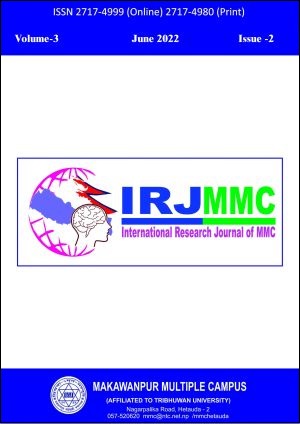Seasonal Abundance and Diversity of Waterbirds of Rapti river from Sauraha to Kasara of Chitwan National Park, Nepal
DOI:
https://doi.org/10.3126/irjmmc.v3i2.46311Keywords:
Chitwan National Park, Diversity, Rapti River, Waterbirds, WetlandsAbstract
Wetlands are the most productive areas for biodiversity and local livelihood support. Waterbirds are important components of most wetland environments. These asonal abundance and diversity of waterbirds of the Rapti River was studied to assess the species composition and richness along with their seasonal variation in August 2017 and January 2018. The fixed-line transect method in a wooden dugout canoe was used for bird sampling between the winter and summer seasons. Total of 51 species of birds belonging to 9 orders and 18 families were recorded. Species richness was high in winter season than in summer. The study revealed that the study site harbors many residents and a few migratory water bird species. According to the IUCN Red List status, 43 species were in the Least Concern, 5species were in the Near Threatened, 2 species were invulnerable, and 1 species was in the Endangered category. The order Anseriformes and Charadriiformes were recorded the much in number that was 11 species each. The dominant family was Anatidae represented by 11 species, followed by the Ardeidae with nine species and the lowest representations of one species were in the other nine families. The Shannon wiener diversity index was found to be higher in the winter season (H’= 3.47) than in the summer season (H’= 3.30). High altitude winter migratory bird Bar-headed Goose (Anser indicus) was also recorded. The major threats to wetland birds included habitat destruction, human disturbances, and fishing. The study concludes that study area contains a diverse and rich avifauna, especially the population of winter migrants that needs to be monitored regularly.
Downloads
Downloads
Published
How to Cite
Issue
Section
License
This license enables reusers to distribute, remix, adapt, and build upon the material in any medium or format for noncommercial purposes only, and only so long as attribution is given to the creator.

